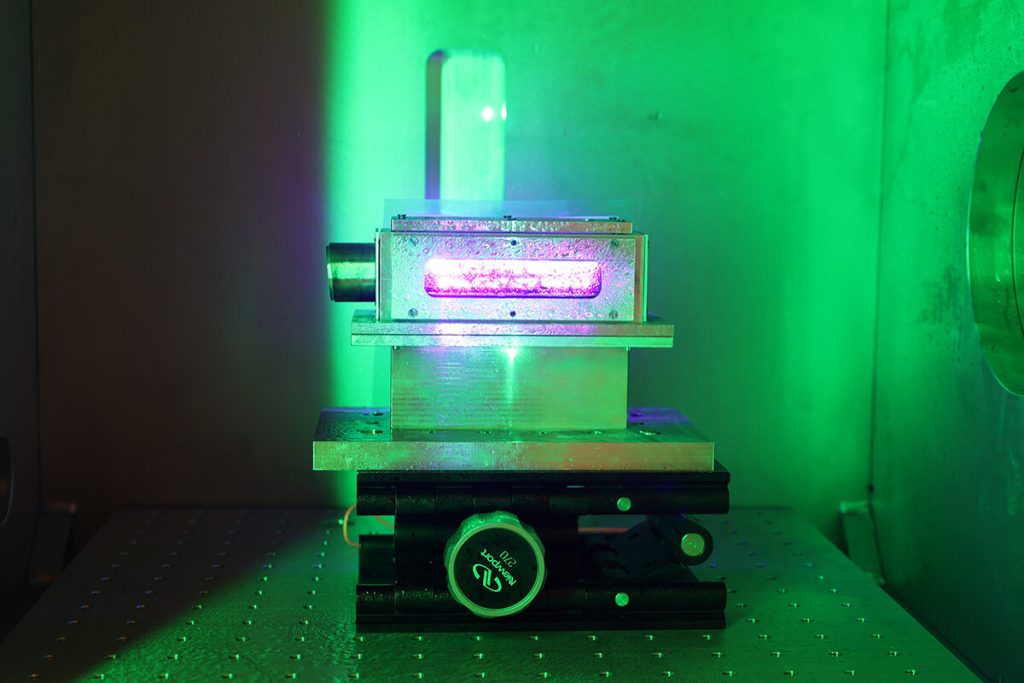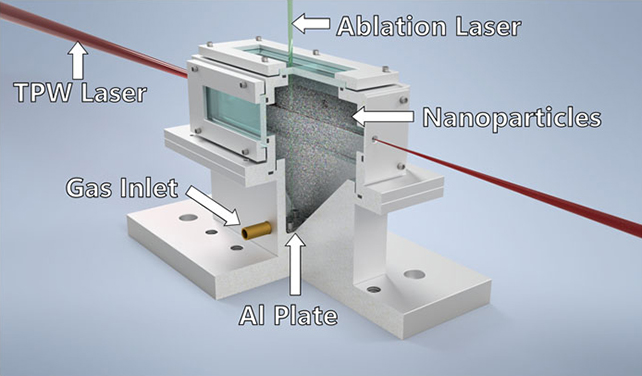
Particle accelerators are incredibly beneficial in scientific research, but, much like the Large Hadron Collider (LHC), they typically require extensive space. An impressive new system crafted at the University of Texas in Austin has the potential to revolutionize this.
During tests, scientists successfully utilized their particle accelerator to produce an electron beam reaching an energy level of 10 billion electron volts (10 GeV) within a compact chamber measuring only 10 centimeters (4 inches).
The entire device spans 20 meters (66 feet) in length. In contrast, other particle accelerators capable of producing 10 GeV beams are approximately 3 kilometers (almost 2 miles) long – roughly 150 times lengthier.
The main factor in significantly shrinking the system’s size was the combination of powerful, very brief laser pulses with helium gas containing tiny aluminum particles. This crucial innovation played a key role in making the system much smaller.
These tiny particles enhance the energy of electrons separated from the nanoparticles by the laser. These energized electrons are then propelled to the outer edges of the laser, riding the plasma waves induced by the laser, much like surfers catching waves on a lake created by a boat.
While the power of these waves would typically be overpowering, similar to how jet skis dominate the waves created by boats, the presence of nanoparticles provides increased stability. This enables the system to be reduced in size effectively.

A physicist Bjorn Hegelich from the University of Texas at Austin said that: “In our accelerator, the equivalent of jet skis are nanoparticles that release electrons at just the right point and just the right time, so they are all sitting there in the wave. In our accelerator, the equivalent of Jet Skis are nanoparticles that release electrons at just the right point and just the right time, so they are all sitting there in the wave. We get a lot more electrons into the wave when and where we want them to be, rather than statistically distributed over the whole interaction, and that’s our secret sauce.”
This specific particle accelerator, utilizing lasers to create plasma waves, falls under the category of a wakefield laser accelerator. The team suggests that their enhanced version could prove valuable in researching semiconductors, evaluating space equipment, and advancing cancer therapy development.
Everything becomes achievable due to the manner in which these tools speed up electrons, hence their name “accelerators.” This process produces energetic waves of electromagnetic radiation, including X-rays, which hold the potential for imaging processes at the molecular scale.

The scientists are eager to enhance the system, but there’s still much we don’t completely comprehend about how electrons, lasers, and plasma interact. In simpler terms, there are numerous thrilling scientific discoveries on the horizon.
“Currently, we do not have a satisfactory model or experimental explanation for the generation of such high electron energies. Various theoretical scenarios are now under investigation and, if relevant, will be the subject of future publications.” explain the researchers in their published paper.
The findings have been disseminated in the esteemed Matter and Radiation at Extremes.





